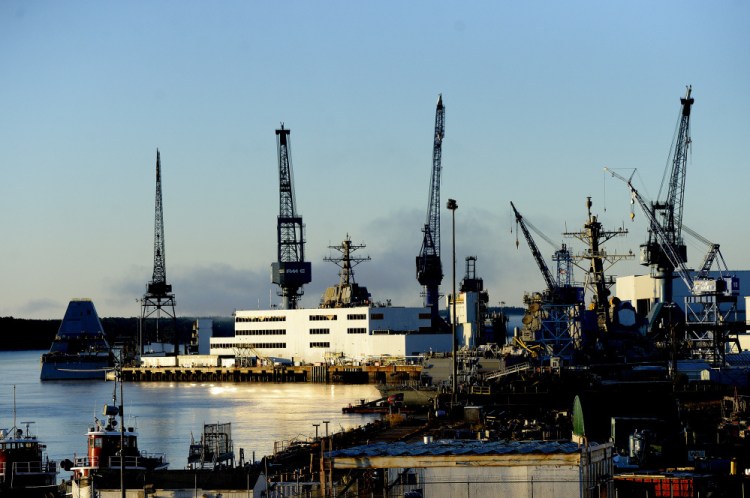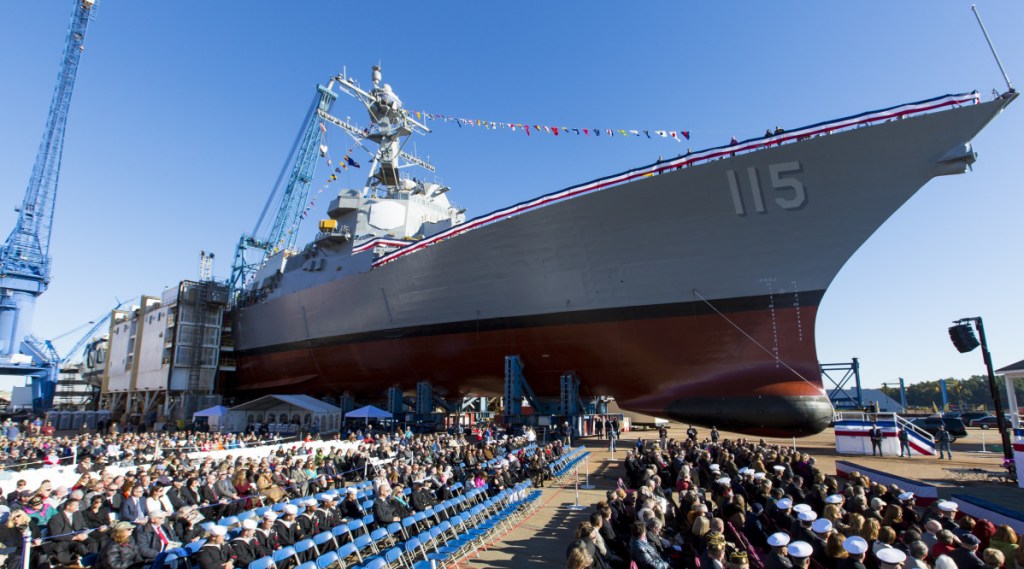BATH — The Navy says it won’t bring older ships out of retirement to build up the fleet to the Trump administration’s 355-ship goal. That could be good news for shipyards such as Bath Iron Works that had hoped the Navy would instead call for the construction of new ships.
Vice Admiral Thomas Moore said this week that Navy officials had looked through the entire inventory of decommissioned ships to see if they could be coaxed out of retirement, but ultimately determined that the cost of doing so would be too great, and bring too little value because of the limited capabilities of the older ships, according to Military.com.
“I was just up in Philadelphia on Friday, and we concluded that the cost of bringing them back was pretty expensive. But more importantly, the capability of the platform itself just didn’t lend itself well,” Moore told reporters Tuesday.
Craig Hooper, a national security consultant who has written about Naval affairs for a number of publications, including his blog NextNavy.com, said he wasn’t surprised by the decision.
“The scheme to raid the reserve fleet was a figment of (a) fevered and uninformed imagination. It was unrealistic from the start,” he said. “The important thing to note is that the calls to restore the (frigates) was based more upon emotion than upon rational thought.”
According to Hooper, the frigates the Navy was hoping to revive would simply be far too expensive to prepare to reenter the fleet for the limited service life they would provide. The old ships would be essentially obsolete in today’s Navy, he said.
If the Navy had moved forward with restoring decommissioned vessels like the Oliver Hazard Perry-class frigates, it could have depressed demand from the Navy for the construction of new ships in their steady march toward building a 355-ship fleet. The hope that building a larger fleet would mean more work for shipyards like Bath Iron Works has persisted since 2016, when then-presidential candidate Donald Trump promised exactly that during a rally in Lisbon.
“My plan builds the 350-ship Navy we need and everybody requests,” Trump said at the time. “And that means a lot more work for – I’m sure you’ve never heard of this place – Bath Iron Works here in Maine.
“The rebuilding of our military will be a nationwide effort from Bath Iron Works to Portsmouth and Norfolk Naval shipyards, to Wright-Patterson Air Force Base and all around the country,” he said.
That promise of additional work at Bath Iron Works has yet to materialize, but in the years since that announcement, Navy officials have been trying to work out the details of exactly how to grow the fleet from its current size of 289 deployable ships to 355 ships. Restoring decommissioned vessels and returning them to the active fleet was one suggestion for how to increase the size of the fleet quickly, but this week’s remarks have ended that possibility.
The Navy also plans to extend the service life of the ships it already has or has already contracted for. Last year, officials announced they were extending the service life of Arleigh Burke-class destroyers by five to 10 years, so they would last 45 years. A report from the Congressional Research Services, a think tank that provides policy information for Congress, noted that extending the service life of those destroyers could lower demand for new ships.
Right now, the Navy’s shipbuilding plan doesn’t foresee a 355-ship fleet until after 2050, meaning in part that any increased demand will be spread out over a 30-year period.
Send questions/comments to the editors.




Success. Please wait for the page to reload. If the page does not reload within 5 seconds, please refresh the page.
Enter your email and password to access comments.
Hi, to comment on stories you must . This profile is in addition to your subscription and website login.
Already have a commenting profile? .
Invalid username/password.
Please check your email to confirm and complete your registration.
Only subscribers are eligible to post comments. Please subscribe or login first for digital access. Here’s why.
Use the form below to reset your password. When you've submitted your account email, we will send an email with a reset code.